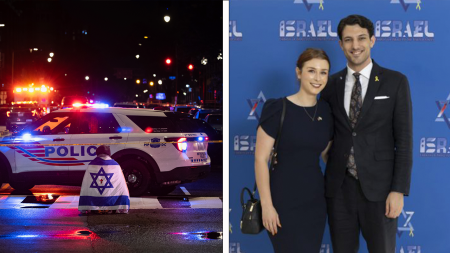April Balascio’s childhood was marked by constant upheaval and an underlying sense of fear. Her family, led by her charismatic yet volatile father, Edward Wayne Edwards, moved frequently, often in the dead of night. Each relocation abruptly severed burgeoning friendships and instilled a deep-seated anxiety that they were being pursued. Edwards, a man who presented a jovial exterior, masking a dark and abusive nature, fueled this fear with claims of unseen enemies. Balascio’s memories are etched with images of his unpredictable temper erupting in violence, most often directed at her mother. This unsettling pattern of sudden departures and unspoken dread cast a long shadow over her formative years, leaving her with unanswered questions and a lingering sense of unease.
Decades later, the puzzle pieces of Balascio’s fragmented childhood began to fall into place. A chance online search in 2009, prompted by a nagging suspicion and a desire to understand her father’s fascination with true crime, led her to the “Sweetheart Murders” – a cold case from 1980 in Watertown, Wisconsin, the very town her family had abruptly fled. The case involved the disappearance and subsequent discovery of the bodies of young couple Timothy Hack and Kelly Drew. Balascio’s memory, triggered by the online reports, dredged up unsettling details: her father’s obsessive interest in the case, his chillingly accurate prediction about the location of the bodies, and the hasty departure that followed their discovery. These long-suppressed memories, once fragments of a confusing past, now coalesced into a terrifying realization.
Armed with a growing conviction of her father’s involvement, Balascio contacted investigators, sharing her suspicions and the unsettling memories from her childhood. Her testimony, while circumstantial, provided a crucial link in the cold case. Subsequent DNA testing confirmed the horrifying truth: Edward Wayne Edwards was the killer. Balascio’s world shattered as she confronted the monstrous reality of her father’s hidden life. The charismatic figure who had dominated her childhood transformed into a cold-blooded murderer. His jovial façade crumbled, revealing the chilling depths of his depravity. The revelation left Balascio grappling with the devastating consequences of her father’s actions and the profound impact on the victims’ families.
The unraveling of Edwards’ crimes didn’t end with the Sweetheart Murders. His confession implicated him in the murders of another young couple in Ohio in 1977 and the calculated murder of his foster son in 1996 for insurance money. The extent of his depravity shocked even seasoned investigators, painting a picture of a man driven by a chilling disregard for human life. For Balascio, each revelation brought fresh waves of grief and disbelief. The man she knew, the father who had instilled fear and uncertainty in her childhood, was now revealed as a serial killer, responsible for unspeakable acts of violence.
Despite the immense emotional turmoil, Balascio found a measure of closure in her father’s death in 2011, just before his scheduled execution. While she had hoped for a deathbed repentance, a glimmer of remorse, his final words revealed a man tormented by the weight of his sins, unable to find solace even in the possibility of divine forgiveness. His death brought an end to the years of uncertainty and fear, but the scars of his actions remained. The legacy of his crimes continued to haunt Balascio, a constant reminder of the dark secret that had shaped her life.
Balascio’s story is not just a tale of a serial killer’s daughter grappling with a horrific legacy. It’s a testament to the resilience of the human spirit. Despite the trauma and the weight of her father’s crimes, Balascio chose a different path. She built a peaceful life, raised a loving family, and ultimately played a crucial role in bringing her father to justice. She continues to seek answers, submitting her DNA in the hope of uncovering more of her father’s hidden victims. Her courage in confronting the darkness of her past and her unwavering empathy for the victims and their families offer a glimmer of hope amidst the tragedy. Balascio’s journey is a powerful reminder that we are not defined by the sins of our parents and that even in the darkest of circumstances, we have the power to choose light.










